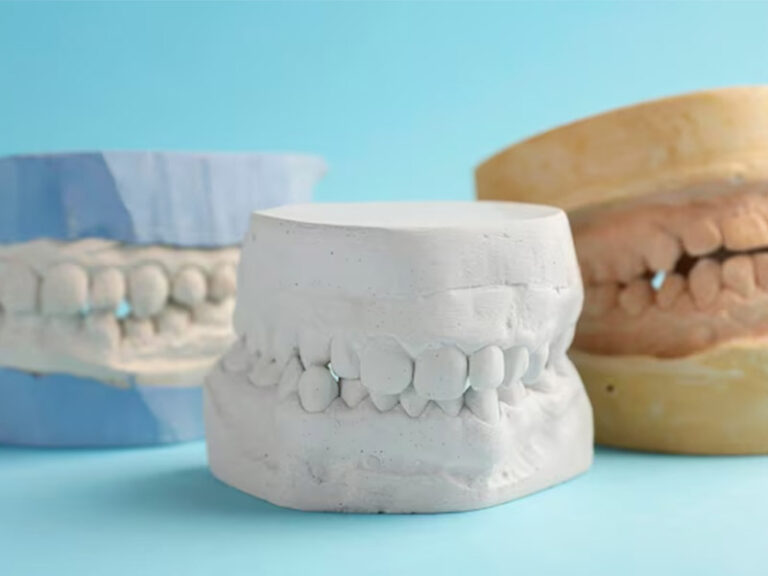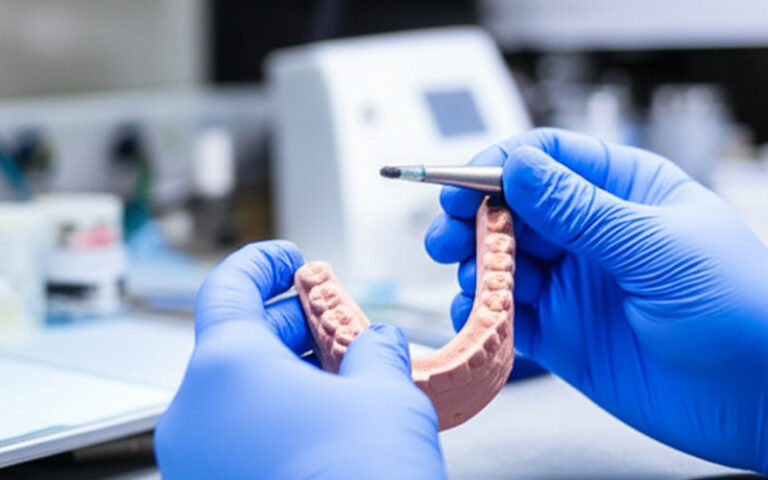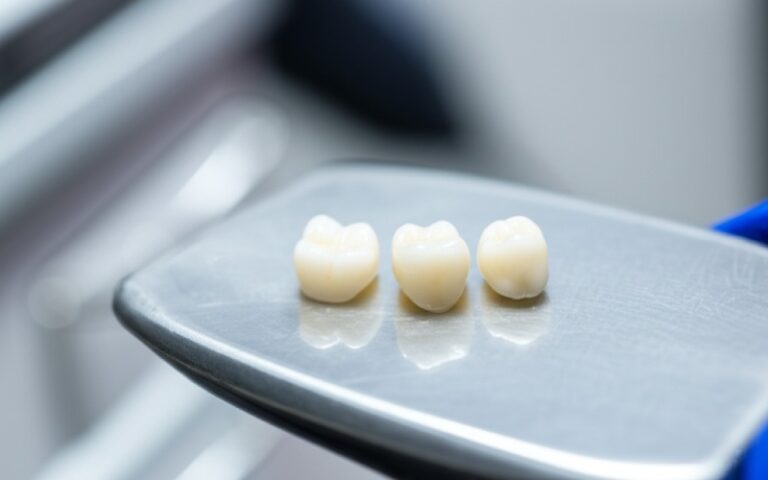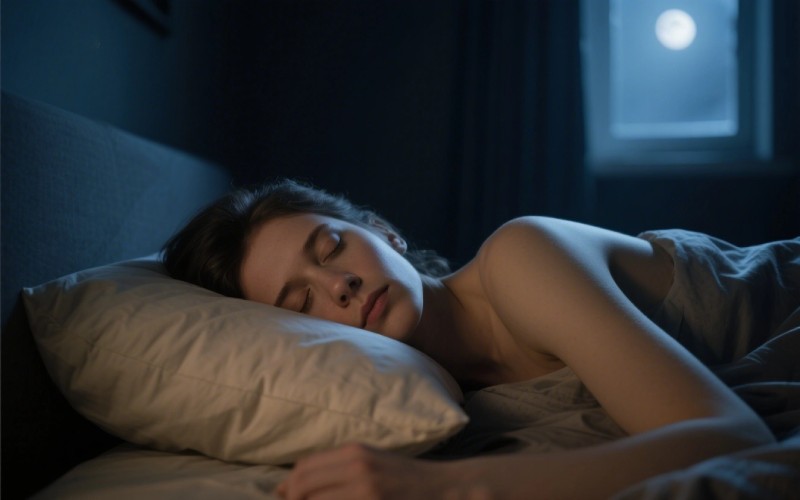
A Guide to Oral Appliances for Obstructive Sleep Apnea
In this article, I will explain what oral appliances for sleep apnea are. I will tell you how they work and who they can help. If you are looking for another way to treat your obstructive sleep apnea, this guide is for you.
Table of Contents
What Is Obstructive Sleep Apnea and Why Is It a Problem?
Before we talk about oral appliances, let’s talk about the problem. Obstructive sleep apnea is a common sleep disorder. When you have obstructive sleep apnoea, the muscles in your throat relax too much during sleep. This blocks your airway. You stop breathing for short periods, over and over, all night long. You might not even know it’s happening. Your body wakes you up just enough to start breathing again.
These pauses in breathing can happen hundreds of times a night. This is a big deal. It means you are not getting the deep, restful sleep you need. The symptoms of sleep problems like this include being very tired during the day, loud snoring, and morning headaches. Dealing with obstructive sleep apnea and snoring is very important for your health. Over time, obstructive sleep apnea can lead to serious health problems. It is more than just feeling tired; it is a medical condition that needs care. That’s why finding the right treatment for obstructive sleep apnea is key.
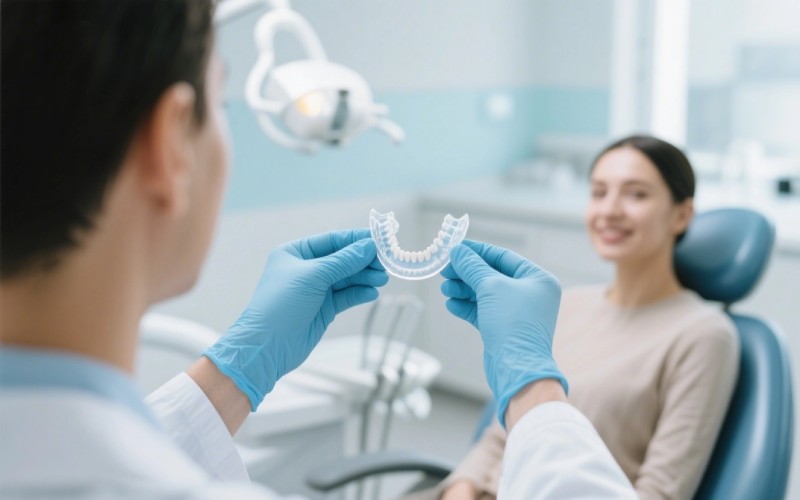
What Are Oral Appliances for Sleep Apnea?
So, what are these helpful devices? Oral appliances are custom-made mouthpieces. They look a lot like a sports mouth guard or a retainer. You wear them only when you sleep. A special kind of dental professional, working with your doctor, will make one just for you. These are not the cheap guards you can buy at the store for snoring. Those are not meant for the treatment of obstructive sleep apnea.
A proper oral appliance for obstructive sleep is a medical device. These oral appliances used for sleep apnea are designed to keep your airway open. They are a popular treatment option for many patients with obstructive sleep apnea. The American Academy of Sleep Medicine says that oral appliances are a good choice, especially for people with mild to moderate sleep apnea. For many, these small oral appliances are a lot easier to use than a CPAP machine.
How Does Oral Appliance Therapy Work to Treat Obstructive Sleep Apnea?
You may wonder how a simple mouthpiece can help such a big problem. The answer is simple and smart. Oral appliance therapy works by moving your lower jaw. The most common oral appliances work by gently pushing your lower jaw, or mandible, forward. These appliances shift the jaw forward just a little bit. This small shift is enough to tighten the muscles and soft tissues at the back of your throat.
When those tissues are tighter, they can’t collapse and block your airway. The goal of an oral appliance in the treatment of obstructive sleep apnea is to keep the airway open while you sleep. This stops the pauses in breathing. It also helps with the treatment of snoring, which is often a sign of a blocked airway. So, this simple oral device helps you breathe freely all night long. The whole point of oral appliance therapy in obstructive sleep apnea is to create a clear path for air. This therapy in obstructive sleep apnea is very effective.
What Is the Main Type of Oral Appliance Used?
There are a few kinds of oral appliances, but one is used most often. This is called a mandibular advancement device, or MAD. Sometimes they are also called mandibular advancement splints or a mandibular repositioning appliance. These are the oral appliances are mandibular advancement devices that I talked about before. They are designed to move your jaw forward. Most oral appliances used today are a type of oral appliance called a MAD.
These mandibular advancement devices are often adjustable. This means your dentist can make very small changes to the position of the device. This is called titration. Mandibular advancement titration for obstructive sleep apnea is a key step. It helps find the perfect forward position for your jaw. This ensures the appliance for obstructive sleep apnea works as well as it can. There are many brands of these mandibular advancement appliances, and your dental expert can help you choose.
Who Can Use an Oral Appliance for the Treatment of OSA?
Oral appliance therapy is a great choice for many, but not for everyone. So, who is a good fit? The American Academy of Sleep Medicine gives us some clear rules. Oral appliances are a first-choice treatment of mild to moderate sleep apnea. If your sleep studies show you have mild to moderate obstructive sleep, an oral appliance could be perfect for you. This is also a great option for the treatment of snoring and sleep.
What if you have severe obstructive sleep apnea? A CPAP machine is usually the first choice for severe sleep apnea. However, if you can’t use a CPAP machine, then an oral appliance might be an option. Some people just can’t get used to the mask. In that case, an oral appliance may be a better choice than no treatment at all. Also, you must have enough healthy teeth for the oral appliance to hold on to. A dentist will check to make sure your teeth are strong enough for the use of an oral appliance. Some people prefer oral appliances because they are small and easy to travel with.
How Do I Get an Appliance for Obstructive Sleep Apnea?
Getting a custom oral appliance is a process with a few steps. It is not something you can just buy. First, you need a proper diagnosis of obstructive sleep apnea. This usually comes from a sleep specialist after you have had sleep studies. Once you have a diagnosis, you can talk to your doctor about your treatment options. If you decide to try oral appliance therapy for sleep, you will need a prescription.
With your prescription, you will go to a dentist who has special training in sleep medicine. This dentist knows how to make and fit oral appliances for sleep apnea. They will check your teeth, jaw, and mouth. Then, they will take molds of your teeth to create a custom-fit appliance for the treatment of your obstructive sleep apnea. This ensures your oral appliance for the treatment is both comfortable and effective. This is a key step to treat obstructive sleep apnea correctly.
Are There Side Effects of Using an Oral Appliance?
Like any medical treatment, there can be side effects. The good news is that the side effects of oral appliances are usually minor. When you first start using an oral appliance, you might have some jaw soreness or tooth discomfort. You might also notice you are making more saliva. For most people, these issues go away after the first few weeks as they get used to the oral appliance.
In the long run, there can be other effects. Some people notice small changes in their bite. This is one of the skeletal effects of an oral appliance. A good dentist will watch for these changes during your check-up visits. Regular follow-ups are very important for anyone using oral appliances. The effects of an oral appliance on your jaw and teeth need to be monitored. Compared to an untreated obstructive sleep apnea syndrome, these small side effects are often a good trade-off. The effects of oral appliances used for treatment of osa are generally manageable.
How Well Does Oral Appliance Therapy for Sleep Apnea Work?
This is the big question: Does it really work? Yes, for the right person, it works very well. The efficacy of oral appliances for mild to moderate sleep apnea is very high. Many studies show that oral appliances can greatly reduce the number of breathing pauses during sleep. They are also very good for the treatment of snoring and obstructive sleep apnea. Your response to oral appliance therapy can be very positive.
The effectiveness of oral appliance therapy also depends on you. You have to wear it every night for it to work. This is called compliance. Because oral appliances are often more comfortable than CPAP, people are more likely to use them. Good compliance during oral appliance therapy leads to better results. To make sure your oral appliance treatment is working, your doctor may order another sleep study while you use the appliance to treat your condition. The efficacy of oral appliance therapy is well-proven for many obstructive sleep apnea patients.
Is This the Right Treatment of Snoring and Sleep Apnea for Me?
Deciding on the right treatment is a personal choice you make with your doctor. If you mainly need treatment for snoring and obstructive sleep apnea that is mild, an oral appliance for treating it could be a great fit. If you have tried CPAP and could not get used to it, you should ask about oral appliance therapy for sleep-disordered breathing. Many patients with obstructive sleep apnoea who can’t use CPAP find success with oral appliances.
Think about your lifestyle. Do you travel a lot? An oral appliance is small and easy to pack. Do you sleep on your back? Sleeping on your back, or in the sleep in the supine position, can make sleep apnea worse. An oral appliance can help in any sleeping position. The best thing to do is talk to your sleep doctor. They can review your case and help you understand if you will respond to oral appliance treatment. Many people prefer oral devices.
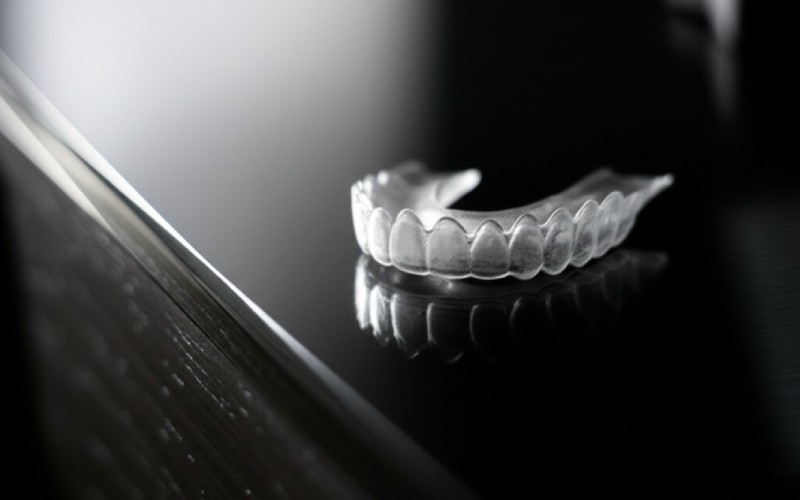
What Should I Expect During Appliance Treatment?
When you start oral appliance treatment of obstructive sleep, there is a getting-used-to-it period. Your dentist will show you how to put in and take out your oral appliance. They will also show you how to clean it. You will have follow-up visits to check the fit and make small adjustments. This is part of the mandibular advancement titration for obstructive sleep apnea. This ensures the oral appliance is working right.
Over time, you will need to keep seeing your dentist for check-ups. They will make sure your teeth and jaw are staying healthy. They will also check your oral appliance for any wear and tear. A good appliance treatment plan involves teamwork between you, your dentist, and your sleep doctor. This is the best way to get a good response to oral appliance therapy. Appliance therapy for obstructive sleep apnea is a long-term commitment to your health. Your oral appliance therapy for obstructive sleep apnea will help you for years to come. This is a journey to better sleep and better health.
Summary: What to Remember
Here are the most important things to remember about oral appliances:
- Oral appliances are custom-fit mouthpieces used to treat snoring and obstructive sleep apnea.
- They work by moving the lower jaw forward, which helps keep your airway during sleep from closing.
- Oral appliance therapy is a proven treatment of mild to moderate obstructive sleep apnoea.
- It is a good alternative for people who cannot use a CPAP machine.
- You need a prescription from a doctor and must be fitted by a qualified dentist with training in sleep medicine.
- Regular check-ups are needed to ensure the oral appliance is working well and not causing problems.
- Many obstructive sleep apnea patients find oral appliances to be comfortable, easy to use, and effective.


